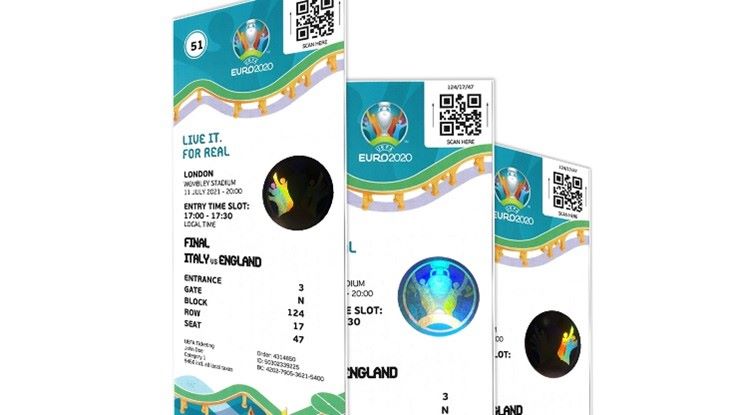



Previously, in ID & Secure Document News™, I have written about the demise of the paper visa in favour of electronic versions that offer greater convenience and functionality over their physical counterparts (see IDN March 2024). In this editorial I will look at another application where digital is rapidly replacing physical.
I have to admit that, before heading off to Cologne, Germany to watch some of the EURO 2024 football matches, I was slightly sceptical about the claims from the organisers that the tickets would be completely virtual until you entered the stadium.
The reasons behind this move were clear. After the chaotic scenes at the 2022 Champions League Final at the Stade de France in Paris, there were widespread reports and claims that significant numbers of fake tickets were in circulation, causing delays and congestion (see IDN’s sister publication Authentication & Brand News™ June 2022). The incident had significant repercussions for the organisers, UEFA, who run both the Champions League and the EUROs, raising concerns about their handling of major sporting events. It also led to a review of security and ticketing procedures for future events to prevent similar issues.
As it transpired, I needn’t have worried about the robustness of the ticketing technology. From the moment that I purchased a ticket I could see it on my app, but the entry code only became ‘live’ as I got within range of the communications around the stadium.
Firstly, and crucially for the user, digital venue ticketing is just more convenient. No longer do you have to wait for the physical tickets to be posted or picked up, no more risk of losing the ticket, and as I found as my group approached one of the matches in Germany, you can transfer ownership of the ticket under secure procedures to another person in your group within seconds. Of course, these conveniences do rely on the app working, your phone working and the communications working. But that is a discussion for a different editorial.
In this case, as it is for visa stickers, the increase in convenience does not seem to come at a risk to security. In both cases, venue ticketing and visas, there has always been a risk of fraud surrounding the shipping, storing and personalisation of the part-finished secure documents. The innovation of virtual entry codes that only become realised at the entry to the venue removes many of the flaws previously associated with coding on documents, because the codes simply don’t exist until they are about to be read.
To get an idea of just how quickly virtual ticketing has developed, consider the previous edition of the EURO in 2020. UEFA worked with Nanotech Security Corp (a Meta Materials company that is now selling most of its authentication business to Authentix) to combine optical technologies with digital verification in the form of a static barcode. In theory, it should have been possible for police and stewards to check the details of the information held on the ticket’s code against the passport or ID card of the fan before they entered the turnstile area of the venue. In reality, anyone who has queued in crowds of thousands outside a large sporting event, with the clock clicking down before the start time, knows how impractical that theory is.

EURO 2020 ticket (© UEFA and Nanotech Security Corp).
To get around the limitations of physical ticketing, which has no easy way to link the ticket to the identity of the bearer, virtual ticketing establishes the identity of the fan at registration, and from there a digital trail is established to link that identity to the virtual ticket.
But it’s not just European football that is doing away with physical venue ticketing. In the US, Major League Baseball (MLB) is going even further in dematerialising the ticketing process by installing facial recognition gates at its ballparks. The Go-Ahead Entry system is proprietary to MLB. By opting into the system, fans can enter participating grounds without the need for a physical ticket or a smartphone app. Instead, cameras at the entry points capture and match their facial features against a pre-registered database, allowing for quick and contactless access.
A 2023 Go-Ahead Entry pilot project at Citizens Bank Ballpark in Philadelphia found that biometric queues moved faster than any of the lanes using physical or smartphone-based tickets. Also in Philadelphia, the Go-Ahead Entry biometrics are paired with scanners that use AI to perform security checks without fans having to empty their pockets.
Within the industry, we have known for some time that the transition from physical to digital identity and secure documentation was inevitable, but that it would not move at the same pace across all application types. And so it is proving to be. Where convenience and functionality can be improved, without increasing cost or jeopardising security, technology will find a way to innovate.